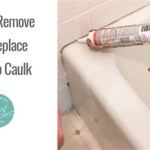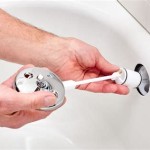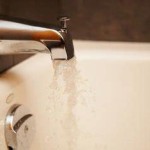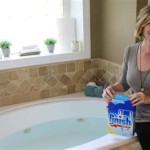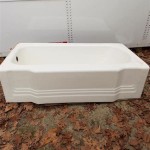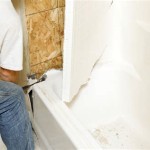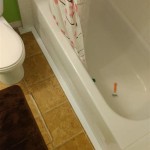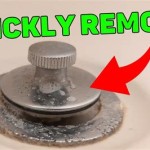How Long Does Bathtub Reglazing Smell Last?
Bathtub reglazing, also known as refinishing or resurfacing, is a process that restores the appearance of worn, chipped, or stained bathtubs. It involves applying a new coating to the existing surface, effectively giving the bathtub a fresh look without the expense and hassle of a full replacement. While reglazing offers a cost-effective solution, one common concern among homeowners is the odor associated with the chemicals used during the process. Understanding the source of the smell, the factors that influence its duration, and available mitigation strategies can help manage expectations and ensure a more comfortable experience.
The primary source of the odor is the solvents present in the reglazing materials. These solvents are essential for achieving proper adhesion and a smooth, durable finish. Most reglazing products utilize coatings that are either epoxy-based or acrylic urethane-based. Epoxy-based coatings, known for their strength and chemical resistance, often emit a stronger, more pungent odor compared to acrylic urethane-based coatings. The specific chemicals used in these coatings can vary between manufacturers, contributing to differences in the intensity and nature of the smell.
The odor from bathtub reglazing is typically described as a strong chemical smell, often reminiscent of ammonia, paint thinner, or even nail polish remover. This smell can be quite noticeable and potentially irritating, particularly for individuals with respiratory sensitivities or allergies. The duration of the smell’s presence is dependent on several factors, including the type of coating used, the ventilation in the bathroom, the temperature and humidity levels, and the thickness of the application.
Factors Influencing the Duration of the Odor
Several factors play a significant role in determining how long the bathtub reglazing smell will persist. Understanding these factors is critical for predicting and managing the odor effectively.
Type of Coating: As mentioned earlier, the type of coating used significantly impacts the intensity and duration of the odor. Epoxy-based coatings tend to emit a stronger and longer-lasting smell compared to acrylic urethane-based coatings. This is due to the higher concentration of solvents required in epoxy formulations to achieve the desired properties. When selecting a reglazing service, inquiring about the type of coating used and its associated odor profile can help manage expectations.
Ventilation: Proper ventilation is arguably the most crucial factor in reducing the odor. Adequate airflow helps to disperse the solvent fumes, preventing them from lingering in the bathroom. Without sufficient ventilation, the fumes can become concentrated, prolonging the duration of the smell and increasing the risk of irritation. The use of exhaust fans, open windows, and even temporary air purifiers can significantly improve ventilation during and after the reglazing process.
Temperature and Humidity: Temperature and humidity levels can also influence the evaporation rate of the solvents. Higher temperatures generally accelerate evaporation, potentially leading to a more intense but shorter-lived smell. Conversely, lower temperatures can slow down evaporation, resulting in a less intense but more prolonged odor. High humidity levels can also hinder evaporation, trapping the solvents in the coating and extending the duration of the smell. Maintaining a moderate temperature and humidity level can help optimize the evaporation process.
Thickness of Application: The thickness of the applied coating directly affects the amount of solvent released into the air. Thicker coatings contain more solvent, which means a greater quantity of fumes to dissipate. Skilled technicians apply coatings in thin, even layers, minimizing the amount of solvent needed and reducing the overall odor. Inexperienced technicians may apply excessively thick layers, inadvertently prolonging the duration of the smell.
Curing Time: The curing time is the period required for the coating to fully harden and reach its optimal properties. During this time, solvents continue to evaporate, contributing to the lingering odor. Different coatings have different curing times, ranging from 24 hours to several days. Following the manufacturer's recommendations for curing time and maintaining proper ventilation throughout this period is crucial for minimizing the smell.
Typical Timeline for Odor Dissipation
While the specific duration of the odor can vary, a general timeline can provide a reasonable expectation. In most cases, the strongest odor is present during the application and immediately following the reglazing process. This initial phase can last for several hours, depending on the factors mentioned above. The intensity of the smell typically begins to diminish significantly within the first 24 to 48 hours. However, a residual odor may persist for several days, gradually fading over time.
With adequate ventilation and moderate temperature and humidity, the majority of the odor should dissipate within 3 to 7 days. In less favorable conditions, such as poor ventilation or high humidity, the smell could linger for up to two weeks. Individuals with sensitivities or allergies may continue to detect a faint odor even after the main smell has subsided. Regular cleaning and airing out the bathroom can help eliminate any remaining traces of the smell.
It is crucial to communicate with the reglazing professional about the expected timeline and inquire about any steps they take to minimize the odor. Some professionals may use low-VOC (volatile organic compound) coatings or employ specialized ventilation equipment to accelerate the dissipation of fumes. Understanding the professional’s approach can provide a clearer understanding of the potential odor and its expected duration.
Strategies for Minimizing and Eliminating the Odor
Fortunately, several strategies can be employed to minimize the odor associated with bathtub reglazing and accelerate its elimination. These strategies focus on improving ventilation, absorbing odors, and utilizing specialized products.
Enhance Ventilation: Maximizing ventilation is the most effective way to reduce the odor. This involves opening windows and doors to allow for cross-ventilation. Place a fan blowing outward to help extract the fumes from the bathroom. Ensure that the exhaust fan in the bathroom is functioning correctly and leave it running continuously for several days after the reglazing. If possible, consider using a portable air purifier with a carbon filter to help remove airborne particles and odors.
Odor Absorbers: Several household items can act as natural odor absorbers. Placing bowls of white vinegar, baking soda, or activated charcoal in the bathroom can help neutralize and absorb the fumes. Change these absorbers regularly to maintain their effectiveness. Another option is to use commercially available odor absorbers designed specifically for removing chemical smells. These products often contain activated carbon or other neutralizing agents that can effectively reduce the odor.
Cleaning and Deodorizing: After the coating has fully cured, thoroughly clean the bathroom to remove any residual fumes or particles. Use a mild detergent and water to wipe down all surfaces, including walls, floors, and fixtures. Avoid using harsh chemicals or abrasive cleaners that could damage the new coating. Consider using an enzymatic cleaner to break down any remaining organic compounds that may be contributing to the odor. Once the surfaces are clean, further deodorize the room with air fresheners or essential oil diffusers. Choose scents that are pleasant and not overpowering, as strong fragrances can sometimes mask the underlying odor rather than eliminating it.
Sealing and Painting: In some cases, the odor can penetrate porous surfaces, such as walls or grout. If the smell persists despite thorough cleaning and ventilation, consider sealing these surfaces with a paint primer designed to block odors. Apply a coat of primer followed by a topcoat of paint to create a barrier that prevents the odor from escaping. For grout, use a grout sealer to prevent the absorption of fumes. This step can be particularly helpful if the bathroom has poor ventilation or if the reglazing was performed in a small, enclosed space.
Professional Air Purification: For persistent or severe odors, consider hiring a professional air purification service. These services typically use specialized equipment, such as ozone generators or hydroxyl generators, to eliminate odors at the source. Ozone generators produce ozone gas, which is a powerful oxidizer that can break down odor molecules. Hydroxyl generators produce hydroxyl radicals, which are highly reactive molecules that can neutralize a wide range of odors. These methods should be used with caution and only by trained professionals, as ozone can be harmful to human health at high concentrations. Proper ventilation and safety precautions are essential when using these types of air purification methods.
By understanding the factors that influence the duration of the bathtub reglazing smell and implementing appropriate mitigation strategies, homeowners can minimize the inconvenience associated with this process and enjoy the benefits of a newly refinished bathtub.

Dangers Of Bathtub Refinishing Blogs Cdc

What Are The Health Risks Of Bathtub Reglazing Fumes

What Are The Health Risks Of Bathtub Reglazing Fumes

Bathtub Refinishing And Resurfacing 101 Room For Tuesday Blog

Bathtub Refinishing Happy Tubs Repair

The Real Deal On Bathtub Refinishing Safety And Precautions Bay State

Top 5 Ventilation Tips For A Safe And Odor Free Bathtub Refinishing Bay State

Bathtub Refinishing And Resurfacing 101 Room For Tuesday Blog

Myths About Bathtub Resurfacing Refinished Solutions

My Bathtub Refinishing Project
Related Posts

